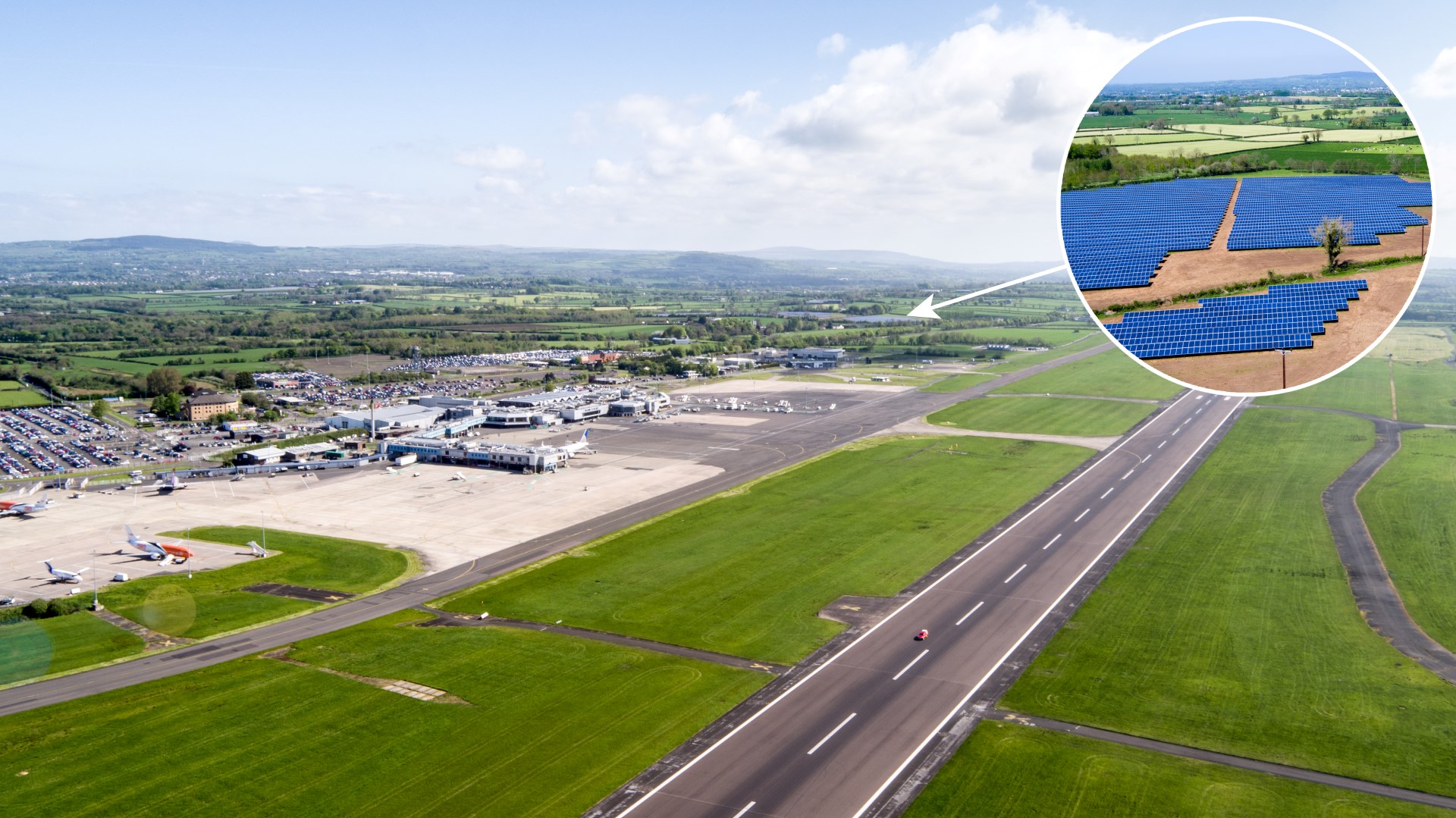Scotland’s busiest airport may be powered exclusively by solar-generated electricity as early as next year.
Glasgow Airport’s owners AGS Airports are seeking planning permission to install 15 MWp of modules on 30 acres within its perimeter, south of the city. It is believed to be the biggest farm on any airport in the UK, outpacing the 5.5MWp at Cornwall International in Newquay.
Envisaged for completion in 2023, Glasgow’s installation will be able to power the entire airport campus, plus tenants in retail, engineering and fuel bunkering. As calculated by consultants Ikigai, the venture’s planned output will be the equivalent of 52,000 homes’ consumption.
AGS Airports’ three fields at Glasgow, Aberdeen and Southampton all achieved carbon neutral status in 2020. The company plans to reach full net zero by 2030.
Chief executive Derek Provan explained that since 2018 Glasgow has purchased exclusively 100% renewable power. On-site generation would enable self-sufficiency, including launching tests in electric aviation.
“As one of the UK’s leading regional airport groups,” said Provan, “there’s a real opportunity for AGS Glasgow to become a testbed for hydrogen and electric flight and the solar farm gives us the ability to future proof for an increase in electricity demand”.
Electrification of operational vehicles, taxis, and rental cars at the field would require EV charging systems. Last month the field signalled the replacement of its eight year old floodlighting, reducing consumption by as much as 25%.
Despite their wide expanses of unshaded, apparently suitable empty space, Britain’s airports have been slow to make a business case for big ground-mounted PV.
Since 2014, Southend has had 2 MWp of PV within its perimeter, and plans expansion. Newcastle won’t complete its planned 16MWp before 2035. John Lennon Liverpool and Doncaster-Sheffield are among fields applying or securing permission for ground-based arrays.
Belfast International’s 4.8 MW facility a mile offsite – pictured above – was developed by what is now bp Lightsource. Birmingham, Gatwick and Heathrow have smaller roof-mounted systems.
Indianapolis Airport in the middle of the USA is showing greater ambition. Its IND Solar Farm, the largest on any US airfield, is already at 20MWp, and planned to grow to 25.6 MWp. Sixteen other US airfields have ground PV arrays.





I imagine “Britain’s airports have been slow to make a business case for big ground-mounted PV” may be to do with the potential glare affecting pilots’ vision when landing. Would be interested to hear what pilots and airport operators say about this.
My contact said the CAA was awaiting at that time EASA’s equivalent standard from a pan-European perspective. (UK was then still an EU member, of course). Athens, Brussels, the immense Bad Hardenburg private airfield near Berlin are among increasing numbers of EU fields with substantial roof- or ground-mounted generation. Consultants Syzygy near London Bridge were technical designers for London Southend’s 2.5 MW, c 2014 then for Stobart Aviation.
Other than the general point that PV panels are built to absorb most wavelengths, not reflect them, I’m afraid I’m stronger on the regs than the optics! If you find out anything from EASA or the CAA, please post here!
Alban, thanks very much for the useful background on that. I remember the Belfast International solar being installed a mile away from the airfield, so was surprised to hear that Glasgow had permission to install within the perimeter of their airfield.
When siting ground-based solar it’s necessary to shield the reflected light of the panels from nearby roads for obvious reasons. How do they manage the same for pilots landing on airfields covered with solar?
Oh, and for readers’ further researches, of course there’s the UK Airport Operators Association – https://www.aoa.org.uk/